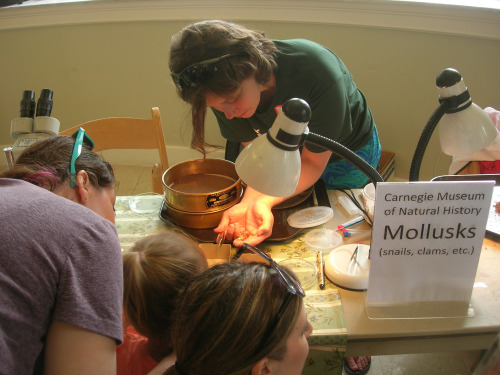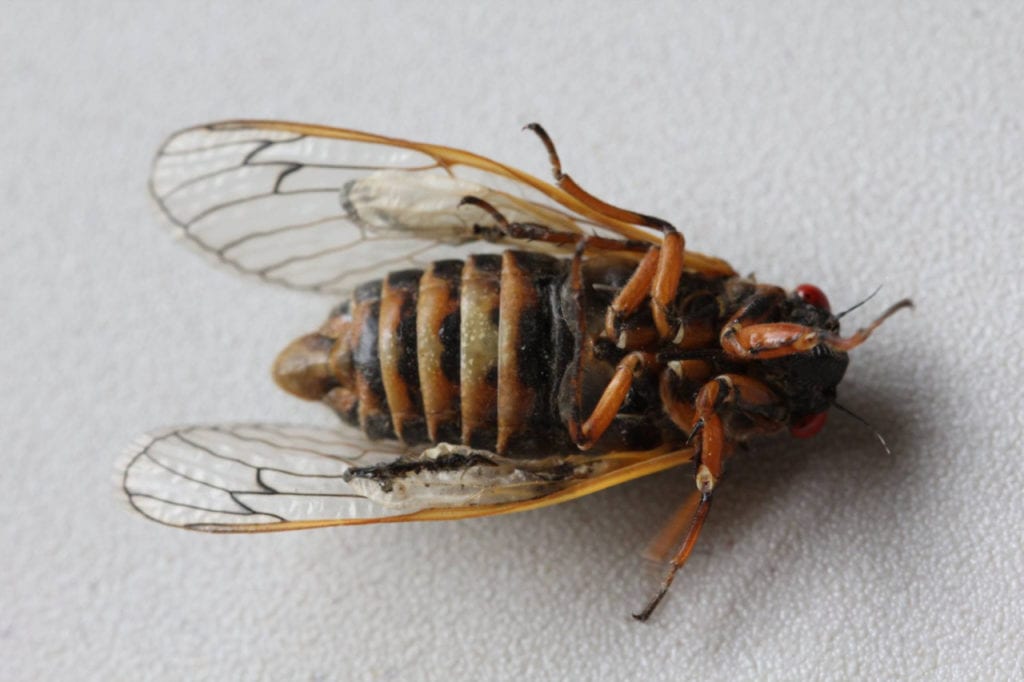
This decorated ware jar in Walton Hall of Ancient Egypt is dated between 3650 and 3300 B.C. The pierced lugs on each side of the jar were used to suspend it, possibly from a tripod.
Carnegie Museum of Natural History
One of the Four Carnegie Museums of Pittsburgh
Carnegie Museum of Natural History is in Pittsburgh, Pennsylvania. Many of the museum's collection specimens are from the local area, including our Botany, Invertebrate Paleontology, and Herpetology specimens. Our collections and our community often influence our work, whether that includes researching climate change, air pollution improvements from the closing of steel mills in the city, or invasive species.
by wpengine

This decorated ware jar in Walton Hall of Ancient Egypt is dated between 3650 and 3300 B.C. The pierced lugs on each side of the jar were used to suspend it, possibly from a tripod.
by wpengine

by Timothy A. Pearce
What lives in our city parks? A BioBlitz is a good way to find out. At a BioBlitz, biologists search in a defined area (such as a park) for a given amount of time (5 a.m. to 5 p.m. in this case) to find as many species as they can in their area of specialty. These biologists share their methods and finds with curious members of the public.
Phipps Conservatory organized a BioBlitz of Schenley Park, which neighbors Carnegie Museum of Natural History in Oakland, on June 5. Museum Curator Dr. Tim Pearce and museum volunteer Katie Zawrotniak headed the snail team and looked in leaf litter samples to find minute snails. They showed snail finds to about 50 visitors. Of the 13 species of land snails they discovered in the park, only one was non-native.
Land snails can be used as an indicator of park’s health (T.A. Pearce. 2009. Land snails as indicator species: examples from seven bioblitzes in the eastern United States. Tentacle, Mollusk Conservation Newsletter, number 17: 12-14). Surprisingly,
compared to other city parks, this was a very low proportion of non-native species. Although the number of species was relatively low, these results suggest that Schenley Park is moderately healthy from the perspective of the land snail community.
Timothy A. Pearce, PhD, is the head of the mollusks section at Carnegie Museum of Natural History. Museum employees are encouraged to blog about their unique experiences and knowledge gained from working at the museum.
by wpengine

This piece on display in Hillman Hall of Minerals and Gems is called “The Garden Necklace.” It features several diamonds and 35 blue zircons. The large aquamarine gemstone is 83.5 carats and the smaller one is 29.23 carats. The necklace was donated to Carnegie Museum of Natural History in 1979 by Betty Llewellyn.
(Photo by Deb Wilson)
by wpengine

Dippy is rocking rainbow to celebrate President Obama issuing the 2016 LGBT Pride Month
Proclamation!
by wpengine
 by José Padial
by José Padial
This jar contains the holotype of Macroprotodon cucullatus iberius, a subspecies of false smooth snake, in the herpetology collection of Carnegie Museum of Natural History.
The holotype is the name-bearer of a species and every species recognized by scientists is associated to an holotype.
The specimen was collected in Cadiz Province, Spain by American herpetologist Stephen Busack. Because of his knowledge of
Spanish, Stephen Busack was deployed in Rota Naval Base during the Vietnam War, and he used his spare time to research the area’s poorly known local fauna of amphibians and reptiles.
His research revealed new species, and the precise locality data he collected is now key to demonstrate the radical transformation that the environment of the area has experienced during the last 40 years.
Many of the populations studied by Busack are now gone. Populations from Cadiz Province are now considered to belong to the species Macroprotodon brevis and it is the smaller and rarest snake of the Iberian Peninsula. It feeds on lizards, baby snakes, blind snakes, and even individuals of its own species!
José Padial is the William and Ingrid Rea Assistant Curator of Herpetology at Carnegie Museum of Natural History. He most recently traveled to the remote Vilcabamba mountains of Peru in the pursuit of biodiversity research. Read more at www.tumblr.com/blog/expeditions-carnegiemnh.
by wpengine



The cicadas are here! Staff at Powdermill Nature Reserve, Carnegie Museum of Natural History’s environmental research center, posted these up-close photos of this 17-year cicada and some more information about it last week.
“This specimen in particular is Magicicada septendecim, indicated by the broad orange stripes on the underside of the abdomen. It is also a male, because of the tymbals located near the base of the wings on each side. These organs are what the males use to make a loud buzzing sound to attract females. When many males sing together, it can be quite deafening!
This cicada has spent seventeen long years underground as a wingless nymph, feeding off of the juices from plant roots. In the year of its emergence, it waits until the soil temperature in its underground tunnel reaches 64 degrees, and then climbs up out of the ground (often onto a tree trunk or other surface) for its final molt into adulthood.”
Have the cicadas come to your neighborhood? Report your sightings at Magicicada.org, where you can also find much more additional information about periodical cicadas!
